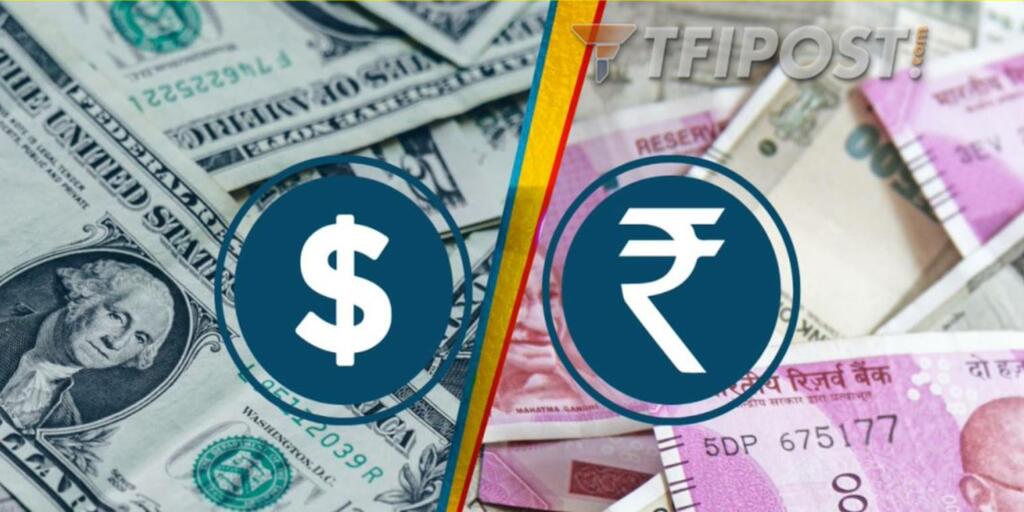Understanding International trade is not an easy task. The number of variables involved is so many that even people forget the count of them. However, a fixed currency is a necessary feature of a stable global exchange of goods and services. This is exactly where things have gone wrong, especially in the past few months. We are fastly moving towards the de-Dollarisation of international trade.
Rupee is not the only currency which has fallen against dollar
Over the last few days, media has gone bonkers over the fall of Rupee against the Dollar. There was a psychological barrier of $1 costing ₹ 80 in the forex market and it has been crossed now. Experts are estimating that in a few months, it is entirely possible that $1 will cost ₹ 82, putting a dent in our Forex Reserve. However, the phenomenon demands a relook. Rather than calling it depreciation of Indian Rupee, it would be better to term it as an appreciation of American Dollar. Here is how.
Rupee is not the only currency which has witnessed a steep decline in its value. In the year 2022, Rupee fell 7 per cent in its value to Dollar. Euro in fact fell 13 per cent down the ladder while the British Pound fell by 11 per cent. Similarly, Japanese Yen fell by 16 per cent. Same is the case with other currencies such as Thai baht, Korean won, Bangladeshi taka, Philippine peso and Taiwanese dollar. Chinese currency was able to save its face in the wake of its increased export necessitated by the Ukraine-Russia crisis.
Dollar is on the rise
The aforementioned relative exchange rate shifts make it clear that it is Dollar on the rise rather than other way around. But, there is a catch here. American Dollar’s rise is not stable. It is in fact a manufactured rise. In the global currency market, the greater demand for currency translates to greater value of that particular currency.
This is partly the reason why Chinese Yuan was not affected. Similarly, India’s emphasis on internationalisation of Dollar is also attributable to its attempt to appreciate its value. This is Economics 101 of currency trade. The more currency in circulation, the more is its value.
Problem with Dollar
Currently, Dollar’s circulation owes mainly to its excessive printing by United States Federal reserve. After the 2008 Financial Crisis, the US administration focused on excessive printing to keep the economy going. Additionally, they also kept the interest rates low to curb recession. 14 years down the line, both these phenomenons have turned into a Frankenstein’s Monster.
Now, the increasing rate of inflation has forced Federal Reserve to raise interest rates. It has led to Dollars being moved back to United States treasury. Basically, more Dollars are circulating in global trade but their flight towards the United States has led to appreciation of the currency. Additionally, Biden administration wants to bring inflation in the range of 2-3 per cent from the current rate of 9. It will translate to more interest rate hikes, leading to more inflow of Dollars into the US economy.
Increasing trade in National currencies
This is what countries have been fearful of. Apart from different sanctions on Russia, Iran, Venezuela and 57 other countries, the volatility around Dollar is one of the reasons why countries are constantly looking for bilateral currency trade agreements. Upcoming Rupee-Rouble is just the tip of the iceberg.
China is already way ahead of other nations looking for substituting Dollar. Currently, more than 2 per cent of global forex reserve is stored in Chinese Renminbi. China is currently involved with non-Dollar tarde with Brazil, Russia among few other countries. It is needless to say that 28 countries of European Union are involved in intra-EU Euro trade.
Also Read: The background story behind Dollar’s ‘most stable’ currency status
Chance for Rupee
In 2021, for a brief period, Dollar’s share in global forex reserved had hit a 25 year low with 59 per cent of the total reserves. Though Covid put some break in its declaration and currently around 60 per cent of Forex is reserved in Dollars. But, this is not likely to sustain for a long term and it is entirely possible that Rupee may play a key role in its downfall.
India’s economic fundamentals are great, which is reflected in Rupee’s strength against other currencies circulating in the global market. At the time when Rupee was depreciating against the Dollar, it registered upsurge in its value against currencies like Norwegian krone, Japanese Yen, British Pound, Euro among others. Clearly, India can tilt bilateral trade with these economies in its favour.
Support TFI:
Support us to strengthen the ‘Right’ ideology of cultural nationalism by purchasing the best quality garments from TFI-STORE.COM
